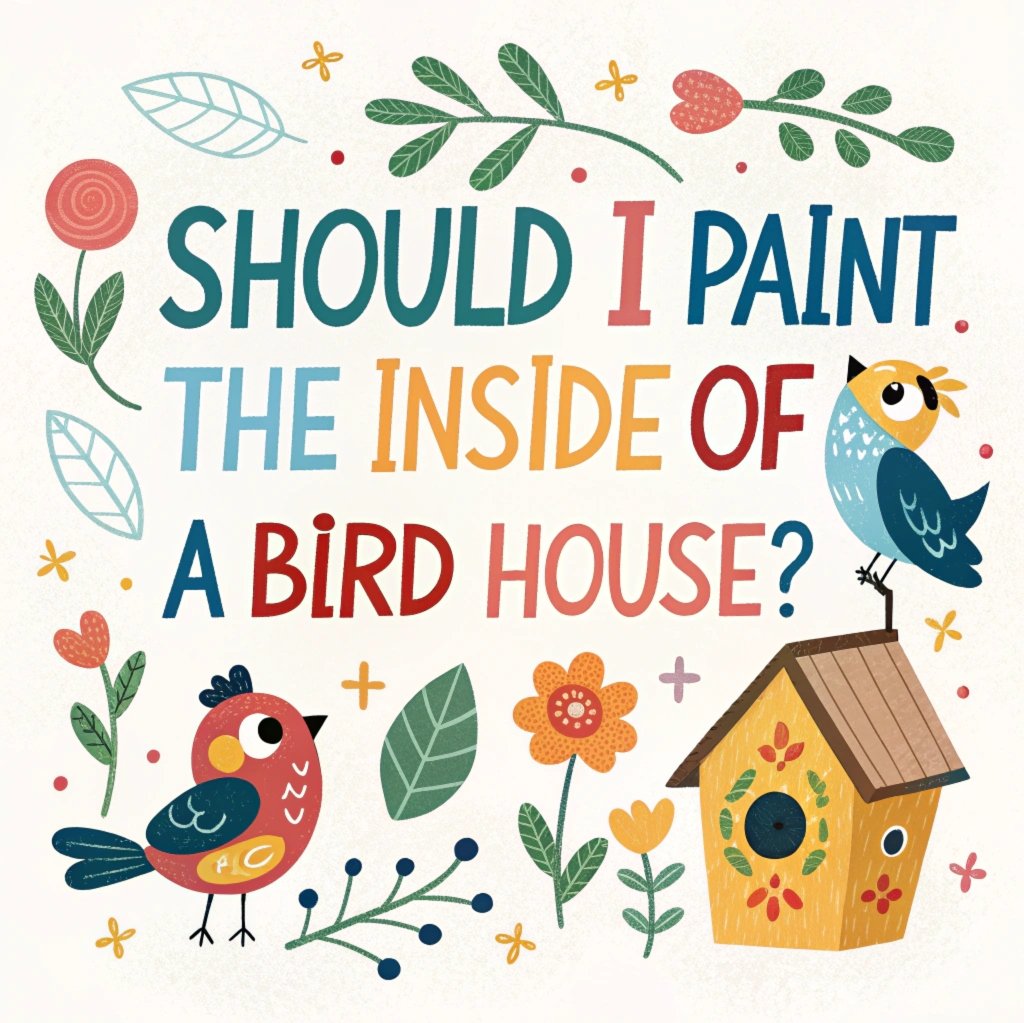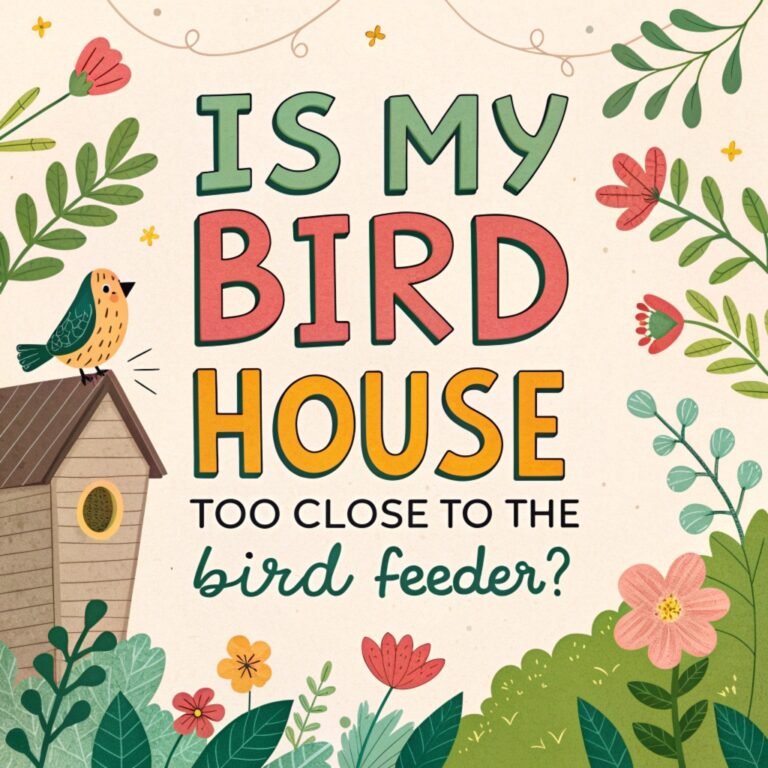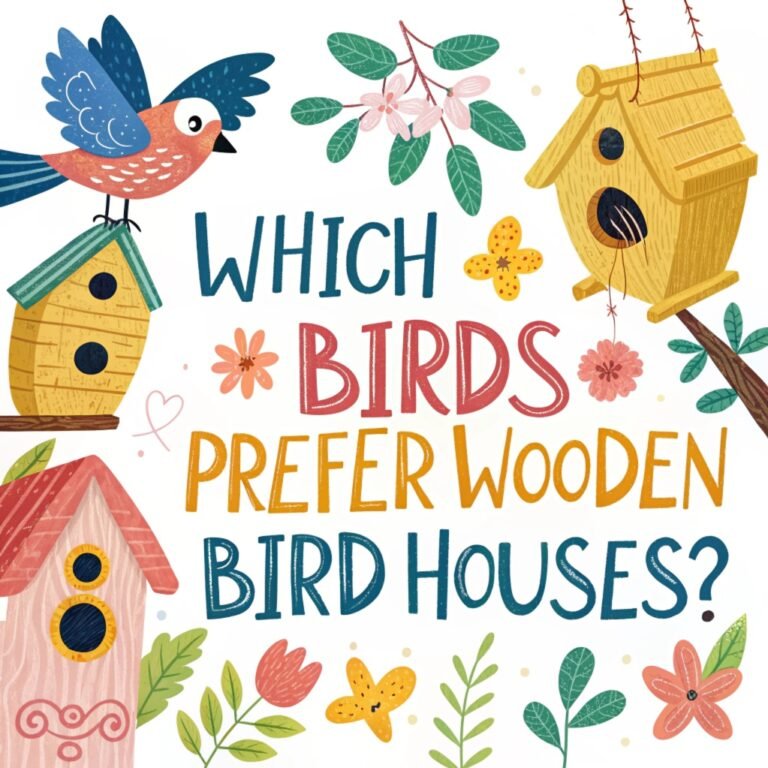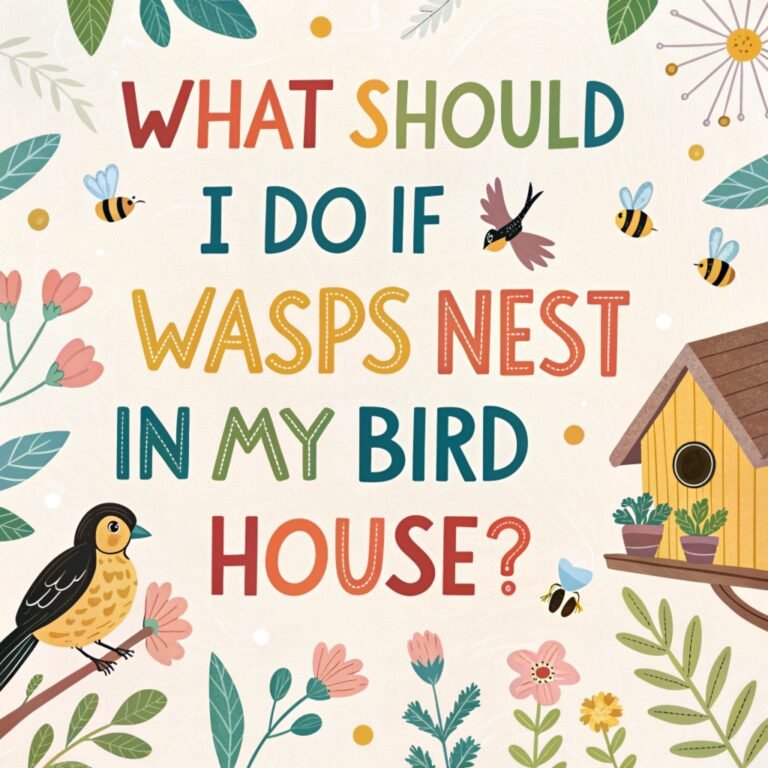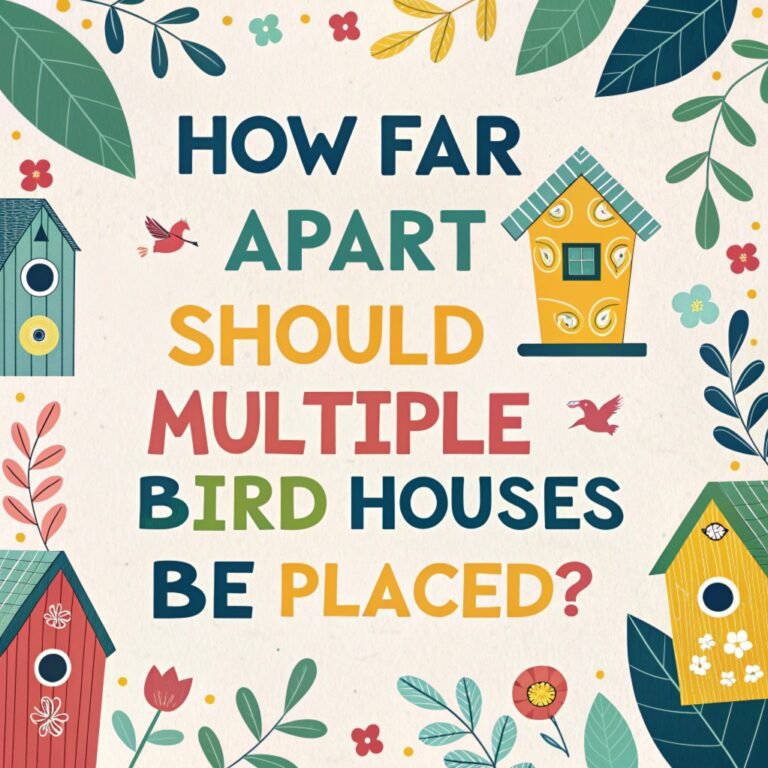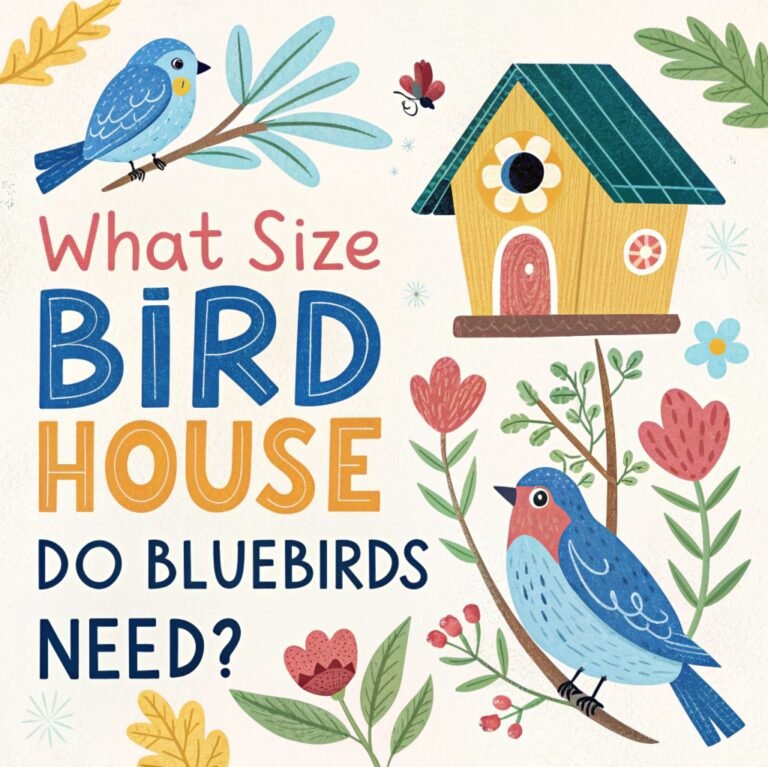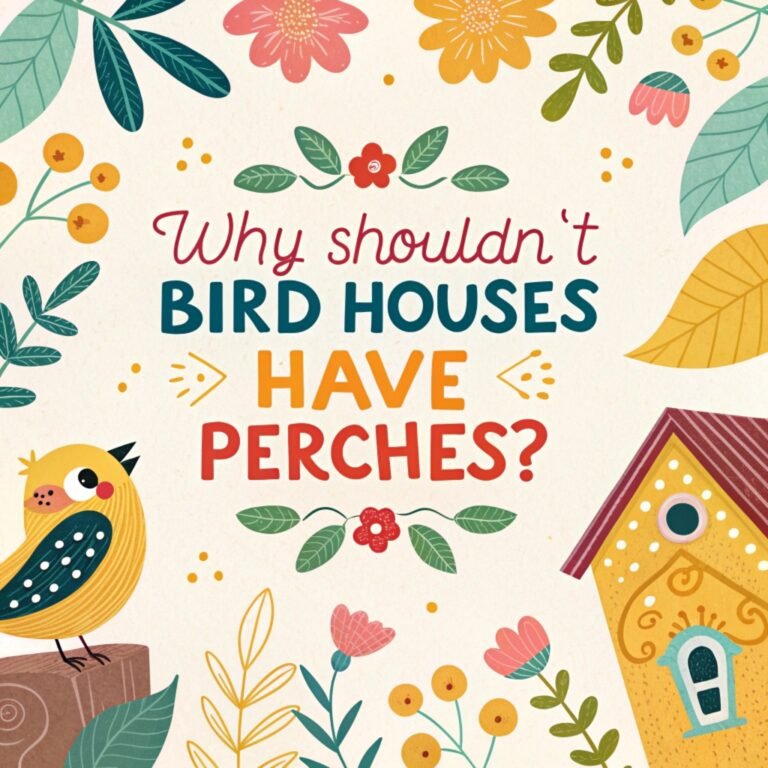Should I Paint the Inside of a Bird House? A Comprehensive Guide to Safe and Effective Birdhouse Painting
When it comes to creating a welcoming home for our feathered friends, many bird enthusiasts wonder about the best practices for painting birdhouses.
One common question that arises is whether it’s appropriate to paint the inside of a birdhouse.
In this comprehensive guide, we’ll explore the dos and don’ts of birdhouse painting, with a particular focus on the interior of these avian abodes.
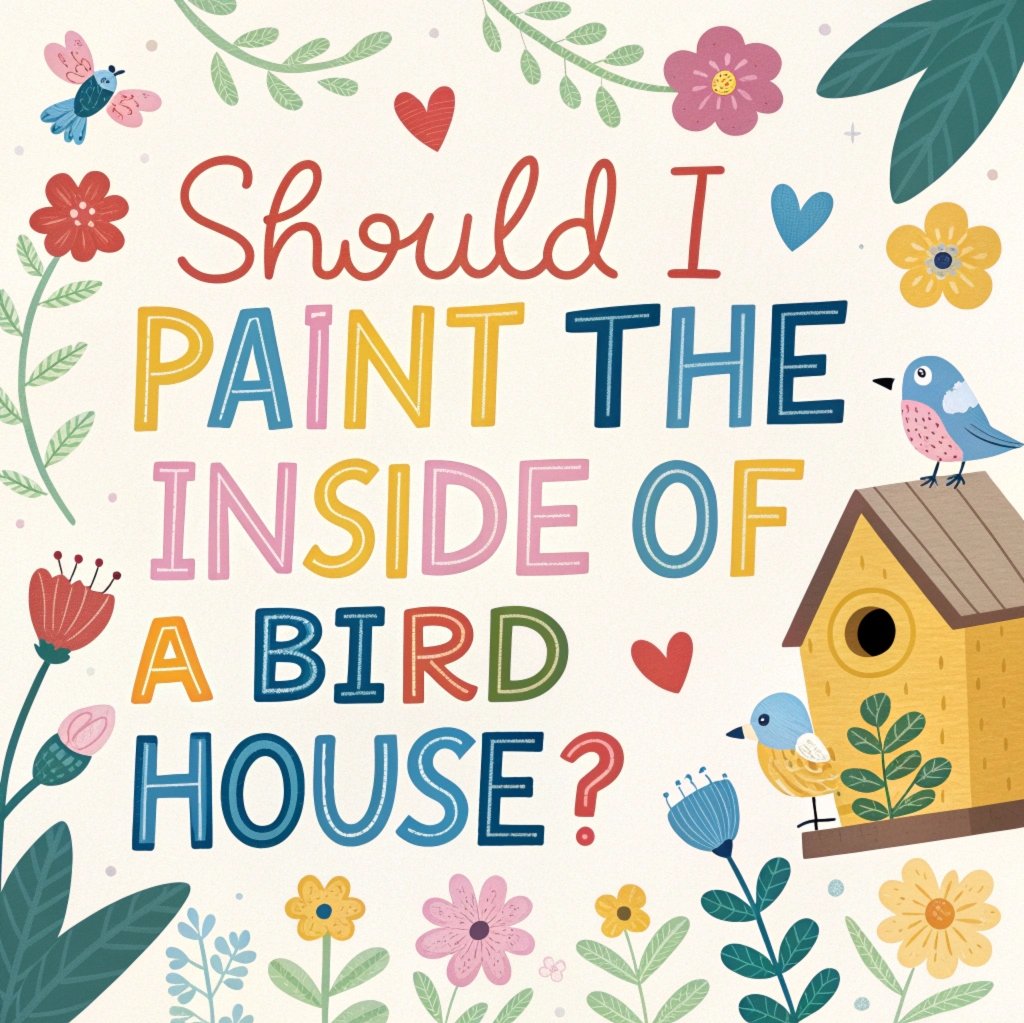
Key Takeaways
- Never paint the interior of a birdhouse to avoid potential harm to nesting birds.
- Use non-toxic, water-based paints for the exterior only.
- Choose earth tones or light colors that blend with the environment and reflect heat.
- Ensure proper ventilation and drainage in your birdhouse design.
- Clean and maintain the birdhouse regularly between nesting seasons.
- Consider the specific needs of different bird species when designing and placing birdhouses.
- Allow painted birdhouses to fully dry and air out before installation.
- Use untreated, weather-resistant woods like cedar or redwood for birdhouse construction.
- Avoid using chemicals or pesticides inside the birdhouse.
- Regularly inspect the birdhouse for damage and make necessary repairs.
By following these key takeaways, you can create a safe and inviting environment for birds while enjoying the beauty of a well-designed birdhouse in your outdoor space.
The Importance of Proper Birdhouse Preparation
Before delving into the specifics of painting birdhouse interiors, it’s crucial to understand the significance of proper birdhouse preparation.
A well-prepared birdhouse not only attracts birds but also provides them with a safe and comfortable nesting environment.
The exterior of the birdhouse plays a vital role in protecting its inhabitants from the elements, while the interior serves as the actual living space for birds and their offspring.
When considering painting a birdhouse, it’s essential to approach the task with the birds’ well-being in mind. Proper preparation involves selecting the right materials, ensuring adequate ventilation, and creating a suitable environment for nesting.
By taking these factors into account, you can create a birdhouse that not only looks appealing but also serves its intended purpose effectively.
Understanding the Purpose of Birdhouse Interiors
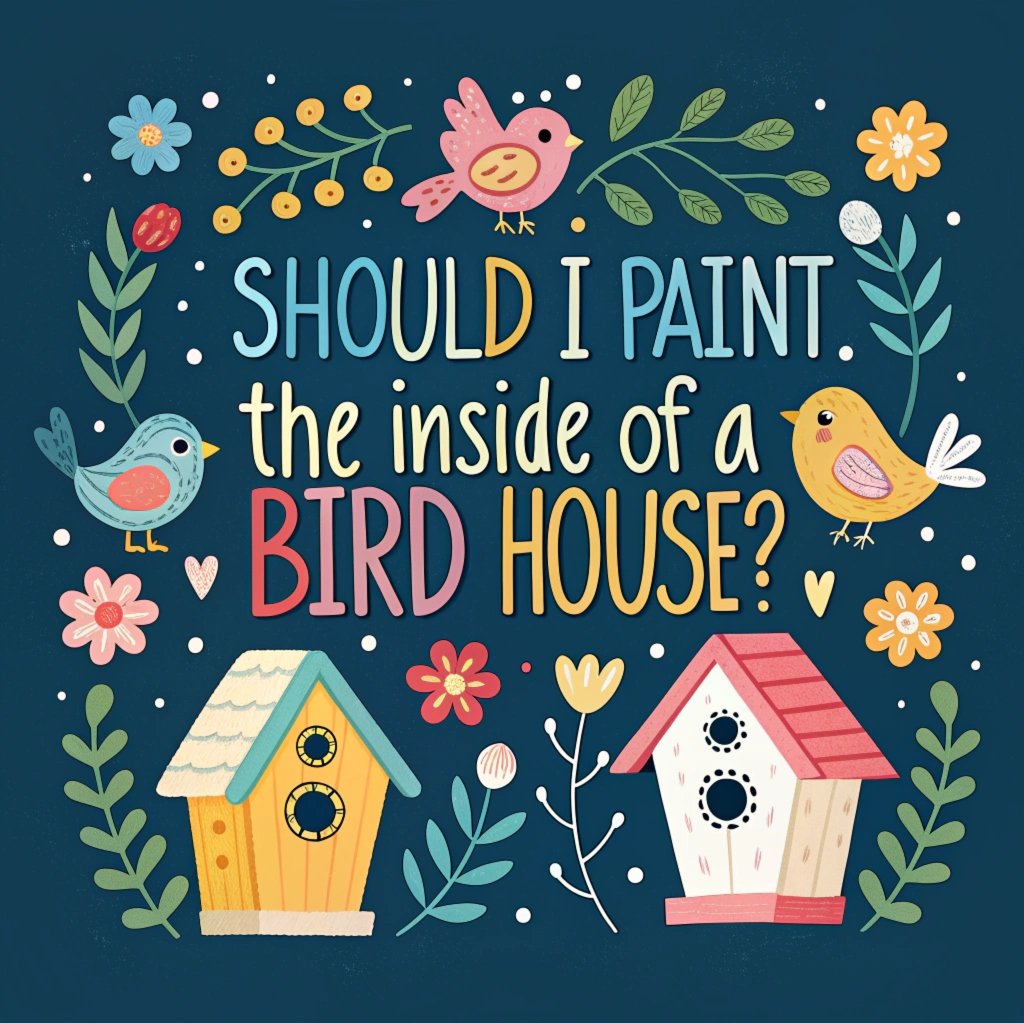
The interior of a birdhouse serves a crucial purpose in providing a safe and comfortable nesting space for birds. Unlike the exterior, which is exposed to the elements and potential predators, the interior is where birds build their nests, lay eggs, and raise their young.
The natural texture of untreated wood inside a birdhouse offers several benefits for nesting birds. It provides a grippy surface for birds to move around easily, especially for young chicks learning to climb.
Additionally, the rough texture helps with temperature regulation and moisture control, which are essential for maintaining a healthy environment for eggs and hatchlings.
Understanding these factors is crucial when considering whether to paint the inside of a birdhouse, as any alterations to the interior could potentially impact the birds’ nesting success and overall well-being.
The Risks of Painting Birdhouse Interiors
Painting the inside of a birdhouse may seem like a good idea for aesthetic reasons or to protect the wood, but it can pose several risks to the birds that inhabit it.
One of the primary concerns is the potential for paint chips to peel off over time, especially as young birds start to move around and scratch at the interior surfaces.
These paint chips can be accidentally ingested by the birds, leading to health issues or even fatalities. Additionally, paint can interfere with the natural insulation properties of wood, potentially affecting the temperature regulation within the birdhouse.
Some paints may also emit fumes that could be harmful to birds, even after they appear to be dry. Furthermore, a smooth painted surface can make it difficult for young birds to grip and climb, which is essential for their development and eventual fledging.
Considering these risks, it’s generally advised to leave the interior of birdhouses unpainted to ensure the safety and well-being of the avian inhabitants.
Expert Recommendations on Birdhouse Interior Treatment
Bird experts and conservationists strongly advise against painting the inside of birdhouses. The consensus among professionals is that the interior should be left in its natural, untreated state to provide the best possible environment for nesting birds.
Many experts recommend using untreated, rough-sawn cedar or pine for birdhouse construction, as these materials naturally resist decay and provide an ideal texture for birds.
If you’re concerned about wood preservation, some experts suggest using a mixture of boiled linseed oil and turpentine on the exterior only, avoiding any treatment on the inside.
It’s also recommended to drill small drainage holes in the bottom of the birdhouse and ventilation holes near the top to ensure proper air circulation and moisture control.
By following these expert recommendations, you can create a birdhouse that is both durable and bird-friendly, without the need for interior painting.
Safe Alternatives to Interior Painting
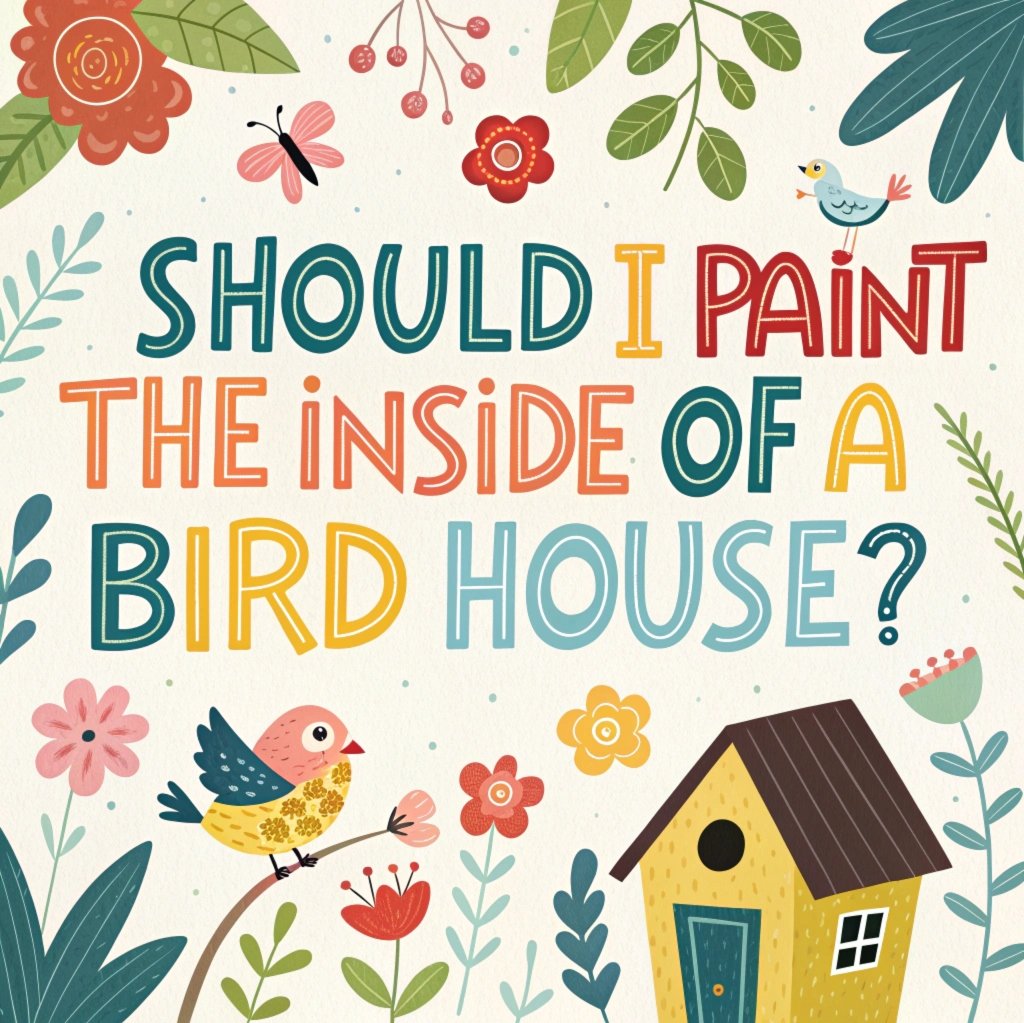
While painting the inside of a birdhouse is not recommended, there are safe alternatives to enhance and protect your birdhouse without compromising the well-being of its inhabitants.
One option is to focus on exterior treatments that are bird-safe and environmentally friendly. Using water-based latex paints or natural milk paints on the outside of the birdhouse can provide protection against the elements while being safe for birds.
Another alternative is to use natural wood preservatives like linseed oil or beeswax on the exterior, which can help protect the wood without harmful chemicals.
For the interior, consider leaving it completely untreated or using food-grade mineral oil to lightly coat the wood, which can help with moisture resistance without posing a risk to birds.
Additionally, proper construction techniques, such as using weather-resistant woods and ensuring good ventilation, can contribute to the longevity of the birdhouse without the need for interior treatments.
The Benefits of Untreated Birdhouse Interiors
Leaving the interior of a birdhouse untreated offers numerous benefits for nesting birds. The natural wood texture provides an ideal surface for birds to grip and move around, which is especially important for young chicks learning to climb.
Untreated wood also helps with temperature regulation, as it can absorb excess moisture and maintain a more stable internal environment. This is crucial for the development of eggs and hatchlings.
Additionally, the porous nature of untreated wood allows for better air circulation, reducing the risk of mold and mildew growth. Birds are also able to customize their nesting space more easily in an untreated interior, adding or removing nesting materials as needed.
Furthermore, the absence of paint or chemicals ensures that there’s no risk of toxic exposure to the birds or their offspring. By keeping the interior natural, you’re providing a safe, comfortable, and instinctively appealing environment for birds to raise their young.
Proper Cleaning and Maintenance of Birdhouse Interiors
Maintaining a clean and healthy environment inside a birdhouse is crucial for the well-being of its avian inhabitants. While painting the interior is not recommended, proper cleaning and maintenance are essential.
After each nesting season, it’s important to thoroughly clean the birdhouse. Remove old nesting materials and debris, and scrub the interior with a solution of one part bleach to nine parts water. This helps eliminate parasites and harmful bacteria.
Allow the birdhouse to dry completely before closing it up for the next season. It’s also a good practice to inspect the interior regularly for any signs of damage or wear. If you notice any splintering or rough edges, gently sand them down to prevent injury to the birds.
Avoid using any chemical cleaners or pesticides inside the birdhouse, as these can be harmful to birds. By maintaining a clean, natural interior, you’re providing a safe and inviting space for birds to return to year after year.
Choosing the Right Exterior Paint for Birdhouses
While the interior of a birdhouse should remain unpainted, selecting the right paint for the exterior is crucial for both aesthetics and bird safety. When choosing paint for the outside of your birdhouse, opt for water-based latex paints or natural milk paints.
These types of paints are generally safe for birds and the environment. Avoid using oil-based paints or those containing lead, zinc, or other heavy metals, as these can be toxic to birds. When it comes to color selection, consider earth tones or colors that blend with the natural surroundings.
This helps camouflage the birdhouse, protecting its inhabitants from predators. Light colors like white or pale blue can help reflect heat, keeping the interior cooler in hot climates.
However, avoid very dark colors as they can absorb too much heat. Always allow the paint to dry completely and air out for several days before installing the birdhouse to ensure any fumes have dissipated.
The Role of Ventilation in Birdhouse Design
Proper ventilation is a critical aspect of birdhouse design that often gets overlooked. While painting the interior is not recommended, ensuring adequate airflow is essential for the health and comfort of nesting birds.
Good ventilation helps regulate temperature and humidity levels inside the birdhouse, preventing the buildup of excess heat and moisture. To achieve this, drill small ventilation holes near the top of the birdhouse, just under the roof overhang.
These holes should be about 1/4 inch in diameter and spaced evenly around the upper portion of the house. Additionally, creating a small gap between the roof and the walls can provide extra ventilation.
It’s important to note that these ventilation features should never be painted over or blocked, as they play a crucial role in maintaining a healthy environment for the birds.
Proper ventilation also helps prevent the growth of mold and mildew, which can be harmful to birds and their offspring.
Considerations for Different Bird Species
When it comes to birdhouse design and painting, it’s important to consider the specific needs of different bird species. While the general rule of not painting the interior applies to all birdhouses, other aspects may vary depending on the target species.
For example, bluebirds prefer houses with a light-colored exterior to help reflect heat, while wood ducks may be attracted to houses painted in natural wood tones.
The size of the entrance hole and the overall dimensions of the birdhouse should also be tailored to the species you’re hoping to attract. Some birds, like wrens, prefer darker, more secluded nesting sites, so placing their houses in shadier areas might be beneficial.
Purple martins, on the other hand, are colonial nesters and prefer multi-compartment houses painted white. By researching the preferences of the bird species in your area, you can create birdhouses that are not only safe but also appealing to your desired avian visitors.
The Impact of Paint Fumes on Nesting Birds
One of the primary reasons for avoiding painting the inside of a birdhouse is the potential impact of paint fumes on nesting birds. Even after paint appears dry to the touch, it can continue to emit volatile organic compounds (VOCs) for an extended period.
These chemical emissions can be harmful to birds, especially in the confined space of a birdhouse. Birds have highly sensitive respiratory systems, making them particularly vulnerable to air pollutants.
Exposure to paint fumes can cause a range of health issues in birds, from mild respiratory irritation to more severe conditions. Additionally, the strong odor of paint may deter birds from nesting in the birdhouse altogether.
If you must paint the exterior of a birdhouse, it’s crucial to use low-VOC or no-VOC paints and allow ample time for the paint to cure completely before installing the house. By avoiding interior painting and being cautious with exterior treatments, you can create a safer environment for nesting birds.
DIY Birdhouse Construction Tips
Building your own birdhouse can be a rewarding project that allows you to create a safe and comfortable home for birds without the need for interior painting. When constructing a birdhouse, choose untreated, weather-resistant woods like cedar or redwood.
These materials naturally resist decay and don’t require additional treatments. Ensure that your design includes proper drainage holes in the bottom and ventilation holes near the top.
The entrance hole should be the appropriate size for your target species and placed at the right height. Include a hinged roof or side for easy cleaning access.
When assembling the birdhouse, use exterior-grade screws rather than nails, as they hold up better to weathering and allow for easier disassembly if needed. If you want to add color, paint only the exterior using bird-safe paints, and allow it to dry completely before installation.
By following these tips, you can create a durable, bird-friendly house that doesn’t require interior painting and provides a natural nesting environment.
Long-term Effects of Painted vs. Unpainted Interiors
When considering the long-term effects of painted versus unpainted birdhouse interiors, it’s clear that leaving the inside untreated is the better choice for bird health and nesting success.
Painted interiors may initially seem more aesthetically pleasing or easier to clean, but they can lead to several issues over time. Paint can chip and peel, especially in the humid environment of a nest, creating potential hazards for birds.
Unpainted interiors, on the other hand, maintain their natural texture, which is beneficial for bird movement and nest construction. Over the years, unpainted wood develops a natural patina that can actually enhance its appeal to nesting birds.
Additionally, untreated interiors allow for better moisture regulation and temperature control, creating a more stable environment for eggs and chicks.
While painted exteriors may need regular maintenance and repainting, unpainted interiors remain suitable for birds year after year with minimal intervention, making them a more sustainable choice for long-term bird conservation efforts.
Frequently Asked Questions
When it comes to painting birdhouses, many questions arise. Here are some frequently asked questions and their answers:
- Can I use any type of paint on a birdhouse?
No, use only non-toxic, water-based latex or natural milk paints for the exterior. - How often should I repaint my birdhouse?
Repaint the exterior every 2-3 years or when you notice peeling or fading. - Is it safe to paint the entrance hole?
No, leave the entrance hole unpainted to prevent birds from ingesting paint chips. - Can I use wood stain instead of paint?
Yes, but only on the exterior and ensure it’s non-toxic and fully dried before use. - Should I paint the roof of the birdhouse?
You can paint the roof, but ensure proper ventilation and use light colors to reflect heat.
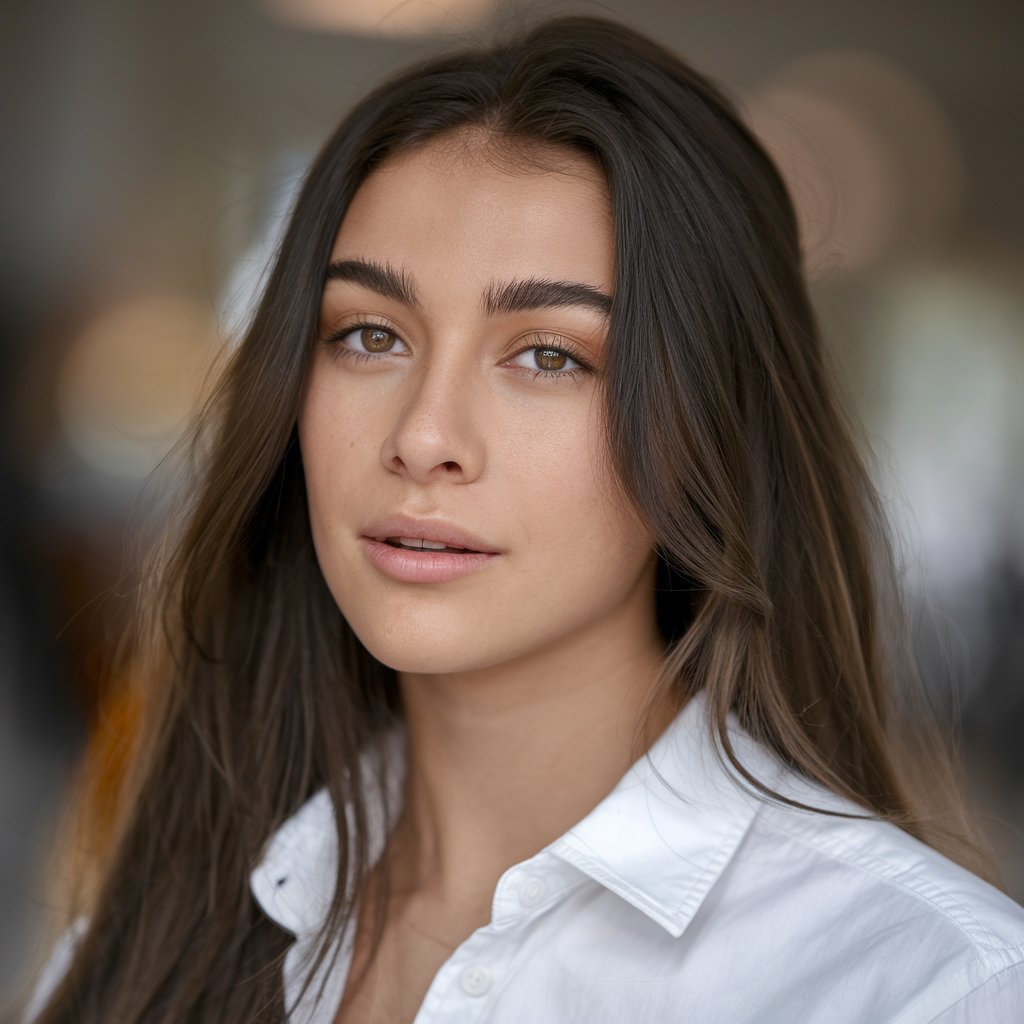
Hello, I’m Amelia White, the founder of birdsfanatic.com. As a lifelong bird enthusiast and spiritual seeker, I’ve always been fascinated by the mystical connections between birds and the human experience. On this site, I share my knowledge and insights into the symbolic meanings and spiritual significance of various bird species, exploring their roles in mythology, folklore, and cultural traditions. Join me on this journey into the world of birds, where we’ll discover the hidden wisdom and guidance that these magnificent creatures have to offer.

